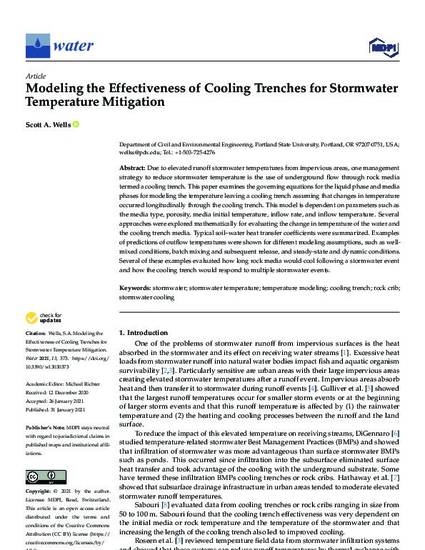
- Urban runoff -- Management,
- Runoff -- Management,
- Runoff -- Temperature -- Mathematical models,
- Urban runoff -- Cooling
Due to elevated runoff stormwater temperatures from impervious areas, one management strategy to reduce stormwater temperature is the use of underground flow through rock media termed a cooling trench. This paper examines the governing equations for the liquid phase and media phases for modeling the temperature leaving a cooling trench assuming that changes in temperature occurred longitudinally through the cooling trench. This model is dependent on parameters such as the media type, porosity, media initial temperature, inflow rate, and inflow temperature. Several approaches were explored mathematically for evaluating the change in temperature of the water and the cooling trench media. Typical soil–water heat transfer coefficients were summarized. Examples of predictions of outflow temperatures were shown for different modeling assumptions, such as well mixed conditions, batch mixing and subsequent release, and steady-state and dynamic conditions. Several of these examples evaluated how long rock media would cool following a stormwater event and how the cooling trench would respond to multiple stormwater events.
© 2021 by the author. Licensee MDPI, Basel, Switzerland.
This work is licensed under a Creative Commons Attribution 4.0 International License.
